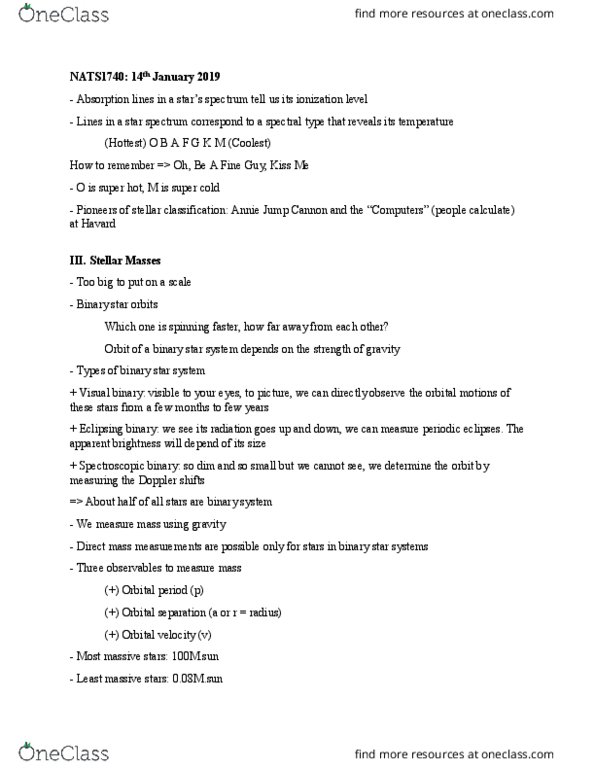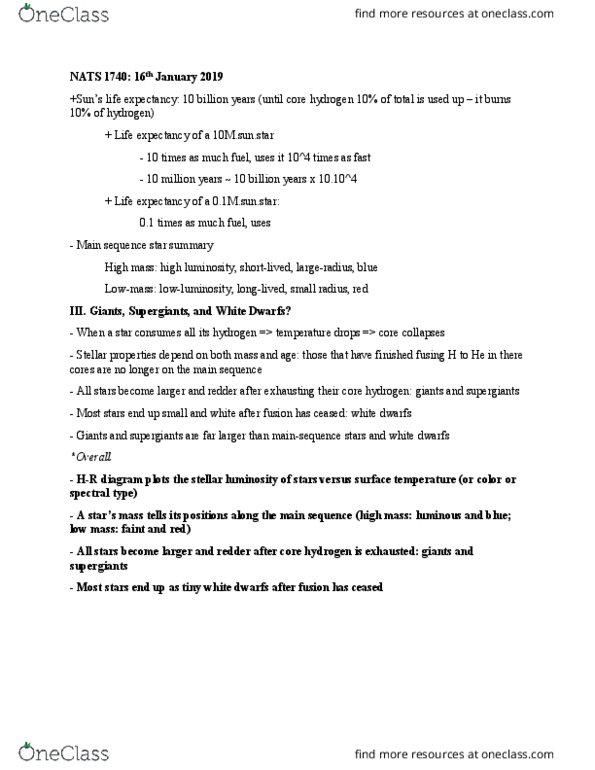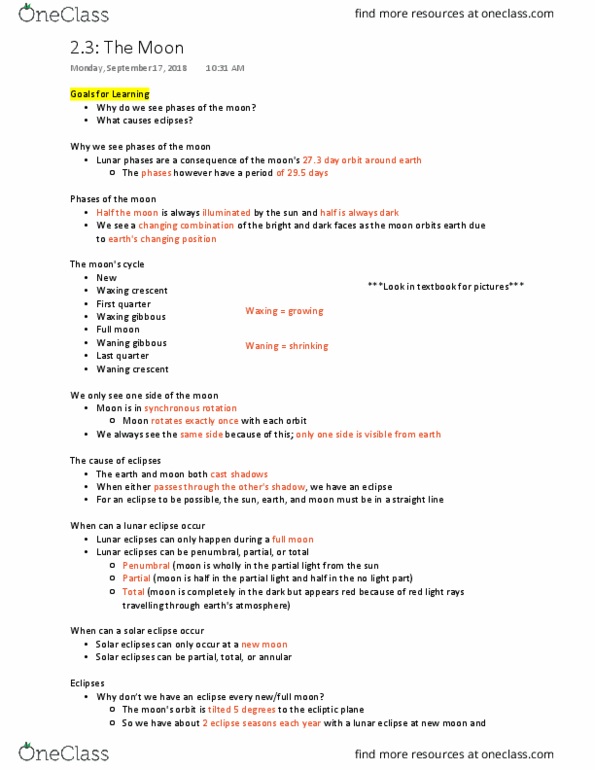NATS 1740 Lecture 6: 16th January 2019
NATS 1740 verified notes
6/37View all

NATS 1740: 16th January 2019
+Sun’s life expectancy: 10 billion years (until core hydrogen 10% of total is used up – it burns
10% of hydrogen)
+ Life expectancy of a 10M.sun.star
- 10 times as much fuel, uses it 10^4 times as fast
- 10 million years ~ 10 billion years x 10.10^4
+ Life expectancy of a 0.1M.sun.star:
0.1 times as much fuel, uses
- Main sequence star summary
High mass: high luminosity, short-lived, large-radius, blue
Low-mass: low-luminosity, long-lived, small radius, red
III. Giants, Supergiants, and White Dwarfs?
- When a star consumes all its hydrogen => temperature drops => core collapses
- Stellar properties depend on both mass and age: those that have finished fusing H to He in there
cores are no longer on the main sequence
- All stars become larger and redder after exhausting their core hydrogen: giants and supergiants
- Most stars end up small and white after fusion has ceased: white dwarfs
- Giants and supergiants are far larger than main-sequence stars and white dwarfs
*Overall
- H-R diagram plots the stellar luminosity of stars versus surface temperature (or color or
spectral type)
- A star’s mass tells its positions along the main sequence (high mass: luminous and blue;
low mass: faint and red)
- All stars become larger and redder after core hydrogen is exhausted: giants and
supergiants
- Most stars end up as tiny white dwarfs after fusion has ceased
Document Summary
+sun"s life expectancy: 10 billion years (until core hydrogen 10% of total is used up it burns. 10 times as much fuel, uses it 10^4 times as fast. 10 million years ~ 10 billion years x 10. 10^4. When a star consumes all its hydrogen => temperature drops => core collapses. Stellar properties depend on both mass and age: those that have finished fusing h to he in there cores are no longer on the main sequence. All stars become larger and redder after exhausting their core hydrogen: giants and supergiants. Most stars end up small and white after fusion has ceased: white dwarfs. Giants and supergiants are far larger than main-sequence stars and white dwarfs. H-r diagram plots the stellar luminosity of stars versus surface temperature (or color or spectral type) A star"s mass tells its positions along the main sequence (high mass: luminous and blue; low mass: faint and red)




